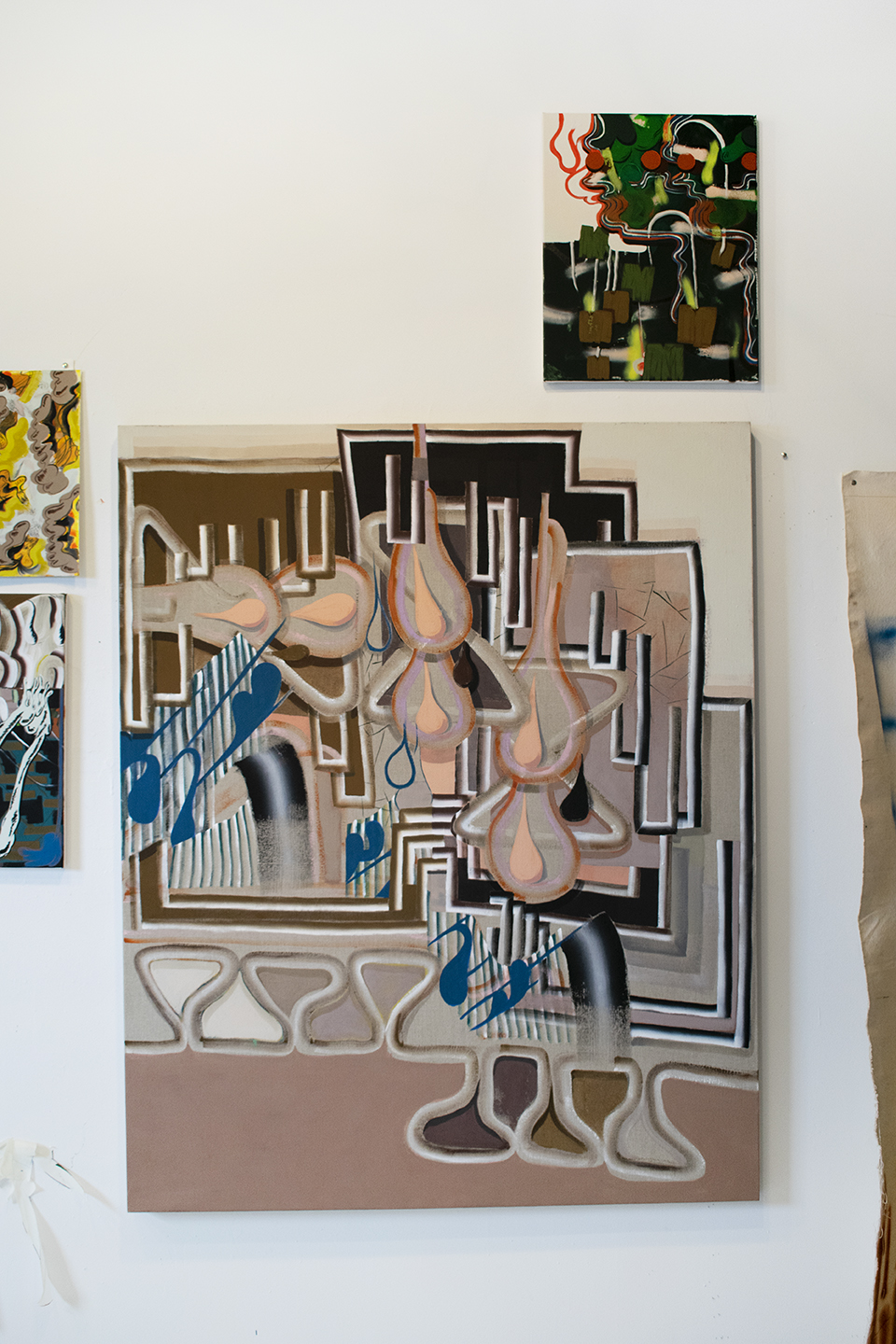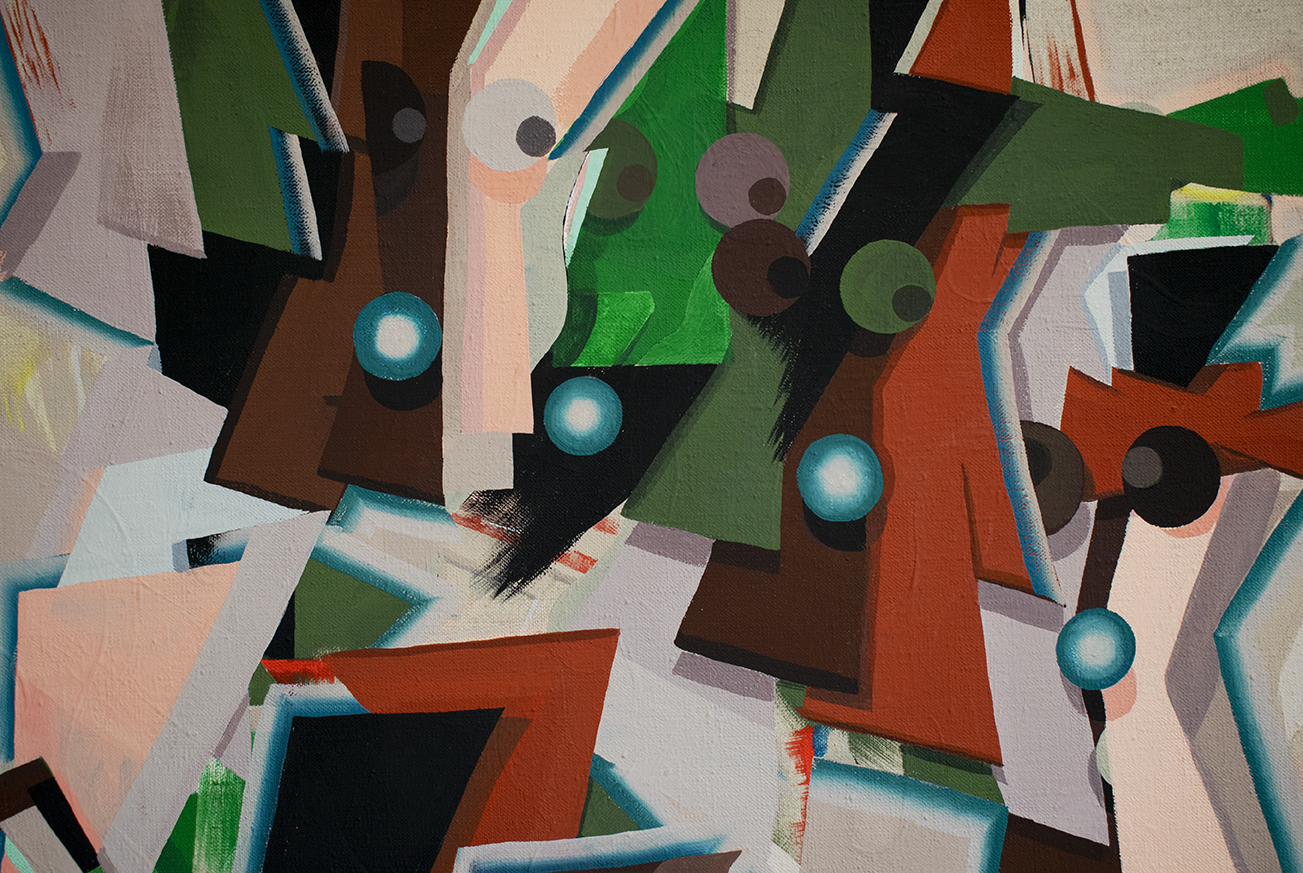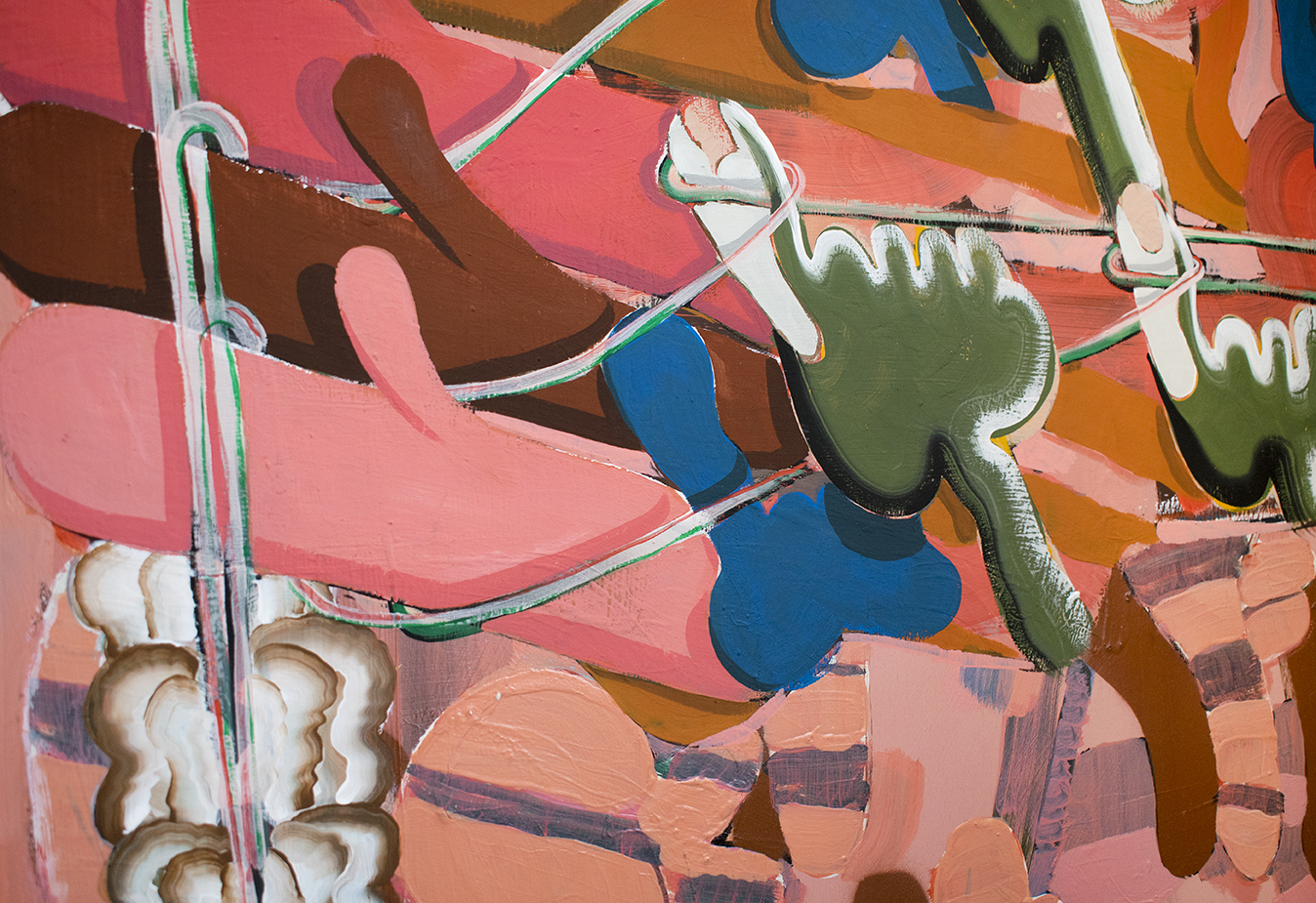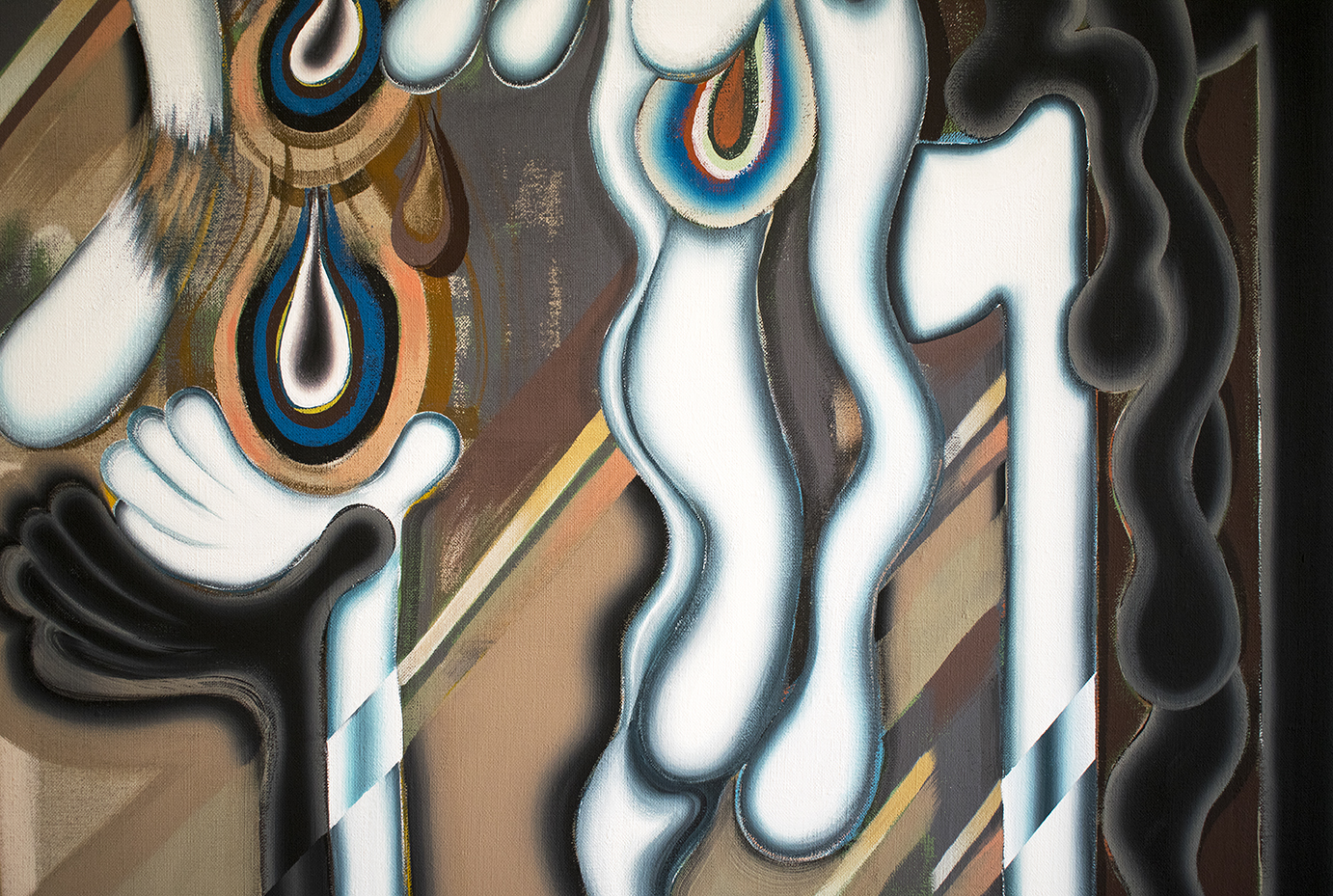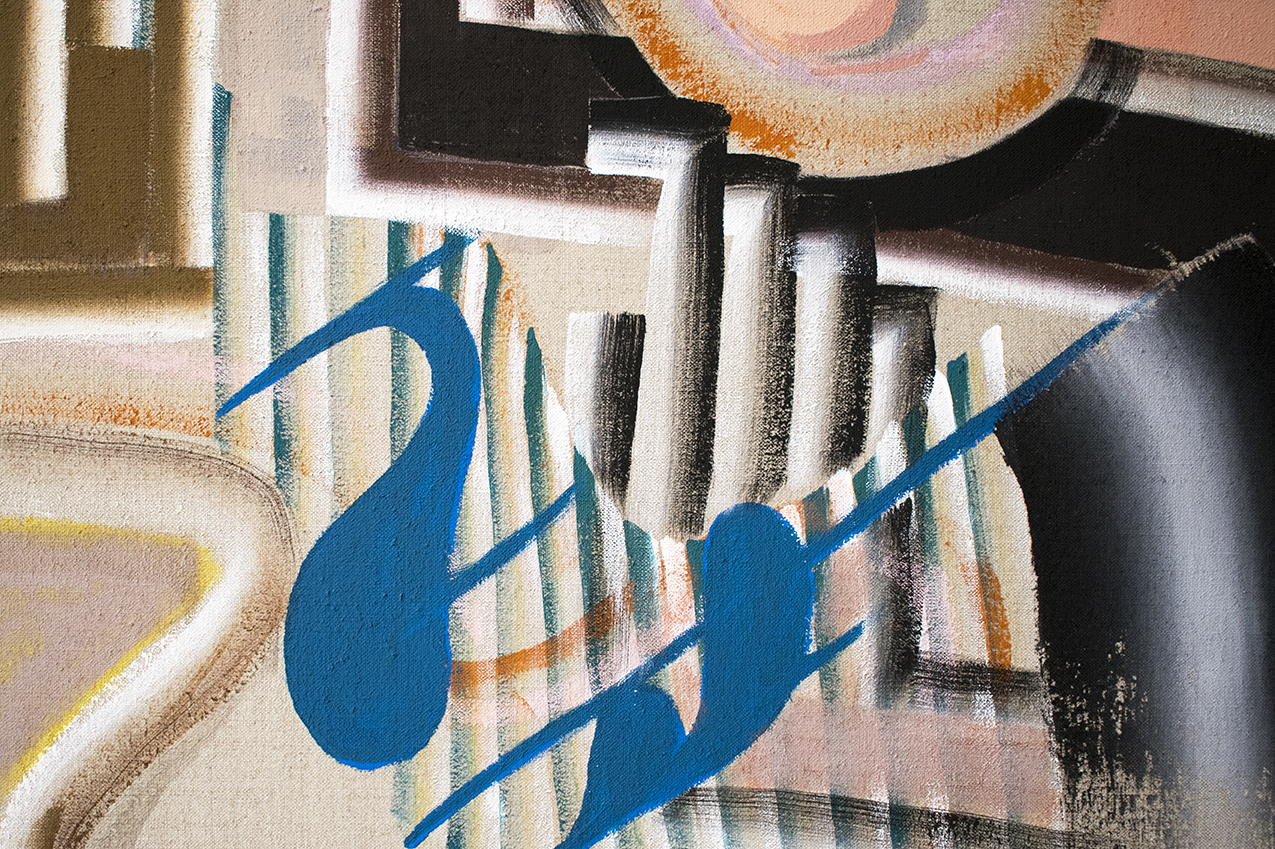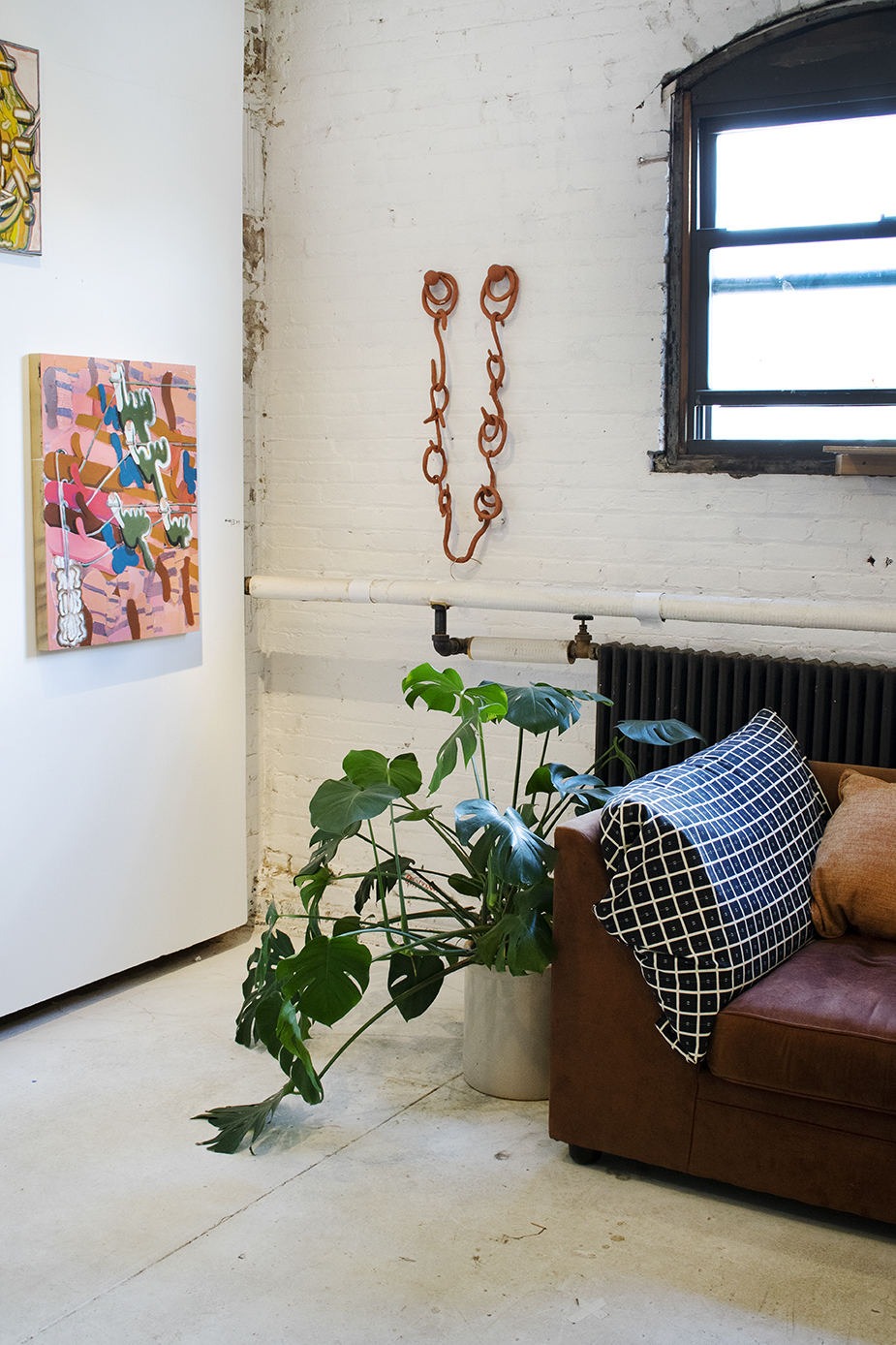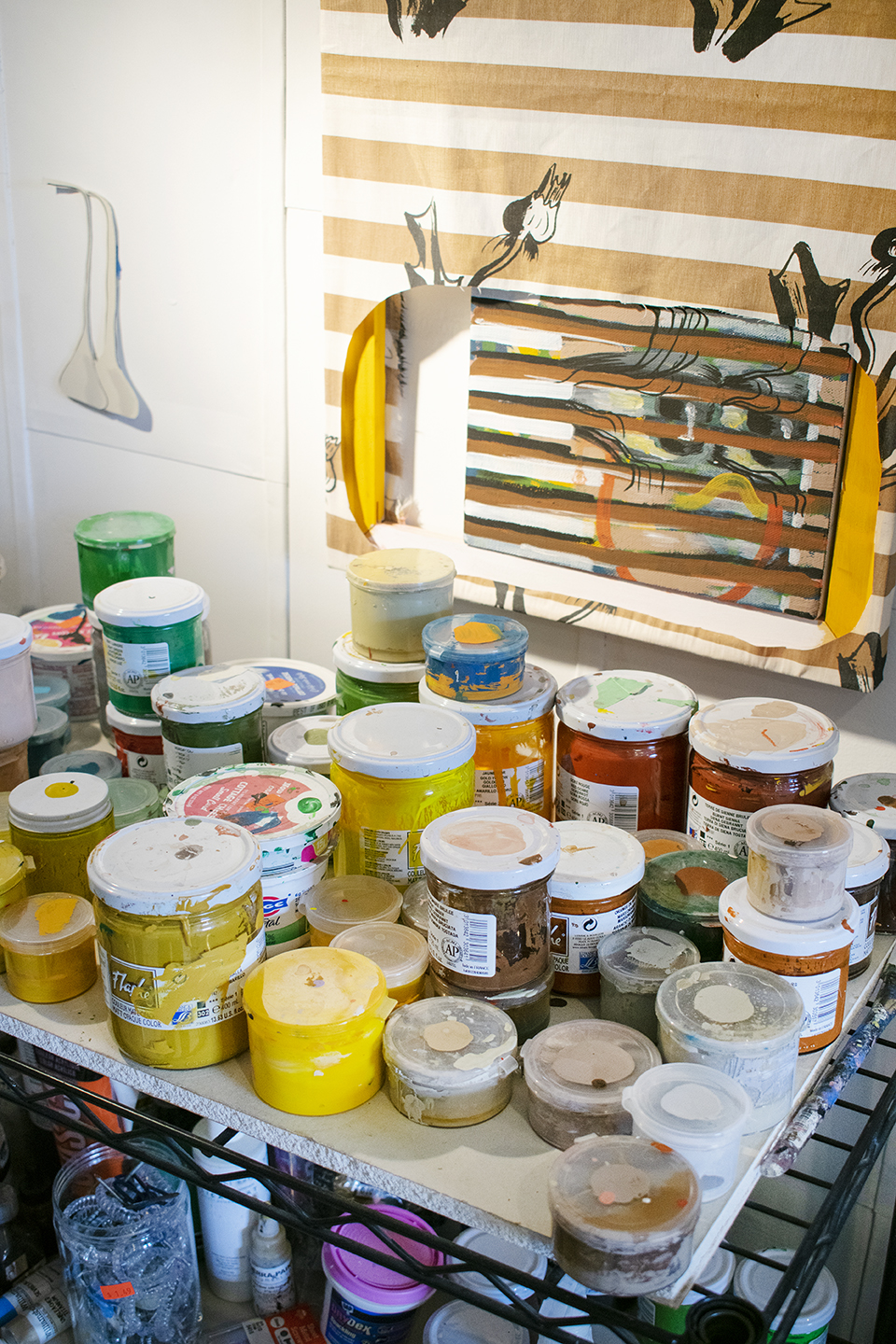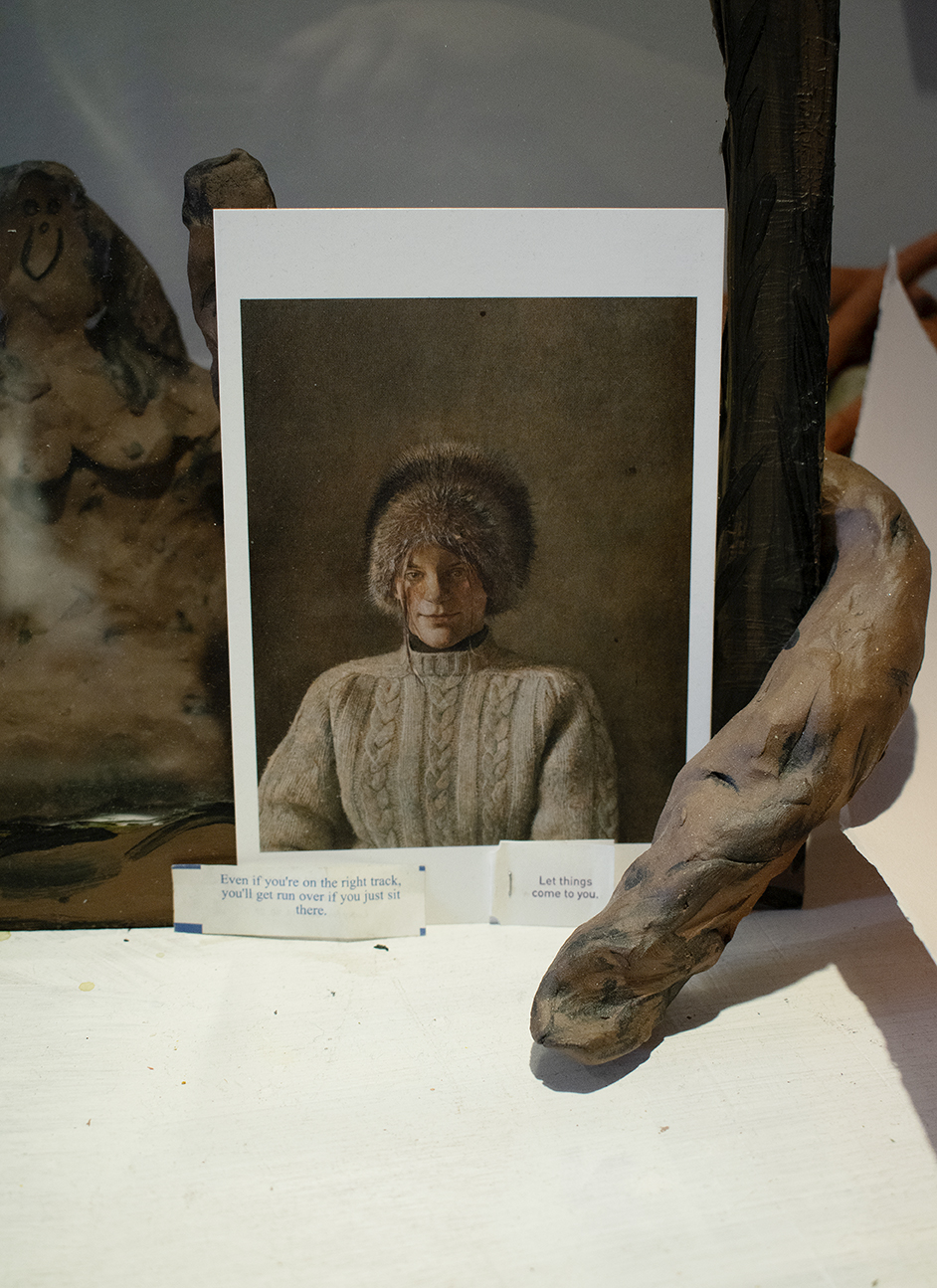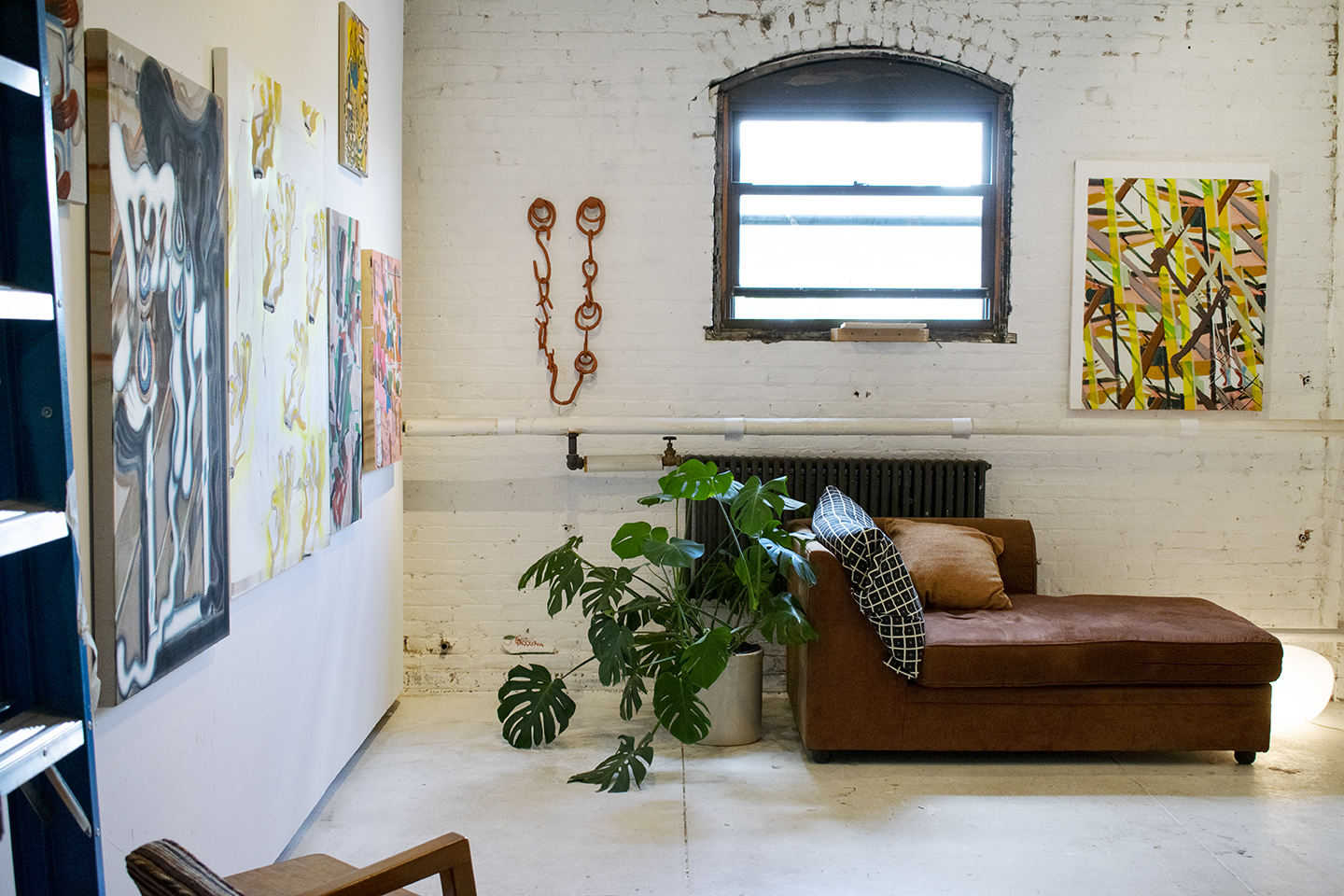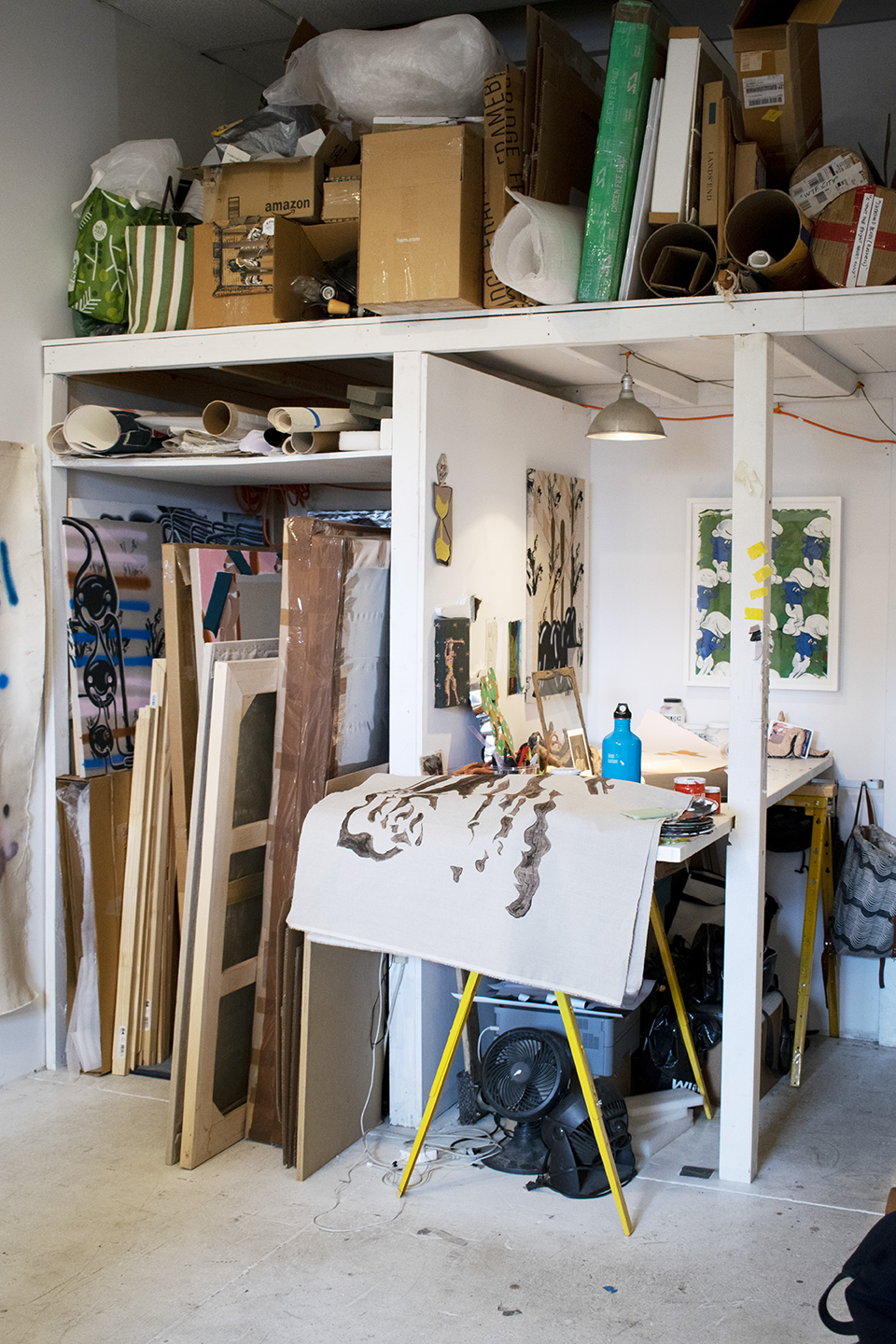To some, repetition can be comforting, a way to see the world through a more focused lens, an instrument of introspection. Patterns reveal themselves in our everyday life, a routine that follows the prescribed motions and rarely strays, a carousel that has no end. In art, patterns can be used to examine the deeper psychological effects that structure and form hold in our collective psyche. Enter Brooklyn based artist Bridget Mullen.
Her work has been described as intuitive and rhythmic, delving into a milieu of abstract shapes while touching on areas of figuration and representational form. Tonally, her paintings shift between loud and energetic colors to softer more melancholic tones, presenting a spectral tension between these moods. Working slowly and instinctively, Mullen layers form upon form, adding and polishing until a satisfactory painting is revealed. Psychologically gripping, Mullen's work leads a viewer on a sinuous path through her own process, a world ripe with textural animation, playful construction and most important, perhaps repetition.
We sat down with her this summer to discuss her work, her practice (in and out of the studio) and what it means to reach the end of things, both in life and in art. Take a look below.

Jessica Ross: Depth and perception are of great importance in your work. When starting a piece, how do you strategize your canvas to create the illusion of three- dimensional space?
Bridget Mullen: I don't start with a plan, I respond in the moment to situations created by my materials. More than half of the proportions of my surfaces are decided based on the linen or canvas remnants left after larger surfaces are built. They can sometimes be very narrow — a challenge which pushes strange compositions. I might make a sketch of a painting halfway through but I don't start with a sketch. I begin my paintings by responding first to the color of the ground, which is usually linen. The initial composition is a reaction to the scale and proportion of the surface. From there I build an abstract painting for some length of time before I start to see how figures could fit within the logic of the abstraction.
Creating a three-dimensional space is one of the things I struggle with the most. Choosing to give something volume or depth usually comes towards the end of a painting. It's a decision to propel a form into the natural world and feels different from the chance encounters that build most of the painting. My paintings are composed by masking sections for some duration, by repurposing marks initially intended to articulate something else, and by the incidental overlapping of open layers. It's very similar to the process of collage. Searching experimentally for my content leaves evidence of the search that ultimately ends up contributing to the content.

I see a tinge of various early cartoon imagery in your work (ie. the gloved hands, the thick tubular lines, old-timey flowers) Did you grow up on these inspirations? How did they come to fit in your work?
I watched some cartoons as a kid but was more interested in Sesame Street. I was particularly bothered by Road Runner and Fantasia— references that people find in my work the most. I didn't like the unreal-ness, the fantasy of cartoons. I didn't like how nothing ever got solved. I found it disturbing that things continue forever; Road Runner never got caught, brooms marched into infinity. Obviously, I see that open-endedness and repetition in my paintings, but as a kid I wanted a tidy narrative. I liked Sesame Street because it was tethered to reality. You could in one moment get lost in the tenderness, gruff-ness, or craziness of the Muppets, and in the next remember they were being manipulated by a person inside them. I know that cartoons must have played a role in my gravitating towards cartoonish renderings, but maybe that association isn't narrative. Or maybe it's a subconscious determination. I do know that the cartoonish imagery in my work is a device for presenting forms without being specific and that early cartoons influenced my color affinities.

Your paintings have been described as “rhythmic” and “in-motion.” How do the different elements in your paintings work together to produce momentum? Why do you think motion is so important in your work?
Repetition of elements, and in particular near replication, implies motion. Slight variation from one element to the next creates a sense of movement. The alikeness of elements in a painting encourages the eye to form a chain— a way of directing and holding attention in a way that's meditative, trance-like, or psychedelic.
Motion in my paintings is a result of working with repeated imagery— the content follows the process. Repetition functions differently in every painting. Repeated figures could feel defiant, powerful, and many, like a marching army. Repetitions might not seem to extend beyond the frame and feel hedged in, and like a single character stuck in some kind of loop reliving a moment. Or the repetitions could suggest something metaphysical, more like energy, memory, or motion trails made visible.
Depicting motion in my work points to how important process is in my content. Motion suggests a building, becoming, or deconstruction of the forms within the painting. It illustrates both my process and how the viewer comes to understand the content. Whether you see explosions or assemblies depends on the imagery, colors, and shapes, and how you pivot from those aspects of the painting.

You've participated in a fair amount of prominent residencies and programs (Sharpe Walentas, Skowhegan, etc.) What are some of your favorite parts about settling into one of those programs? What do you find to be the most challenging bits?
My favorite thing about going to residencies is the people. I tend to only imagine the work I might make before I get there, but once I arrive, I realize it's the people I meet that are going to make the experience significant.
I also like the disruption to my practice and reconfiguring a way of working in a new place. Going to residencies has generated unusual paintings that I might not have made if I hadn't been faced with the challenges of uprooting myself. It's not dissimilar to the obstacles I create to make my paintings. I leave voids to paint around; I paint myself into corners to paint my way out.
What is it about repetition that you find so intriguing? Is it meditative for you to flesh out imagery again and again? What obstacles do you face with this methodology?
Repetition makes me feel happily agitated. In repetition, a comfort in the familiar is being built in direct relation to the mounting anxiety of the inevitable end. Because of this, each repetition feels defiant and victorious. In grad school, I saw the short Ernie Gehr film, "Serene Velocity". Gehr put a tripod in the hallway of a nondescript institutional- type building snapped a still shot, zoomed in, took a shot, zoomed out, took a shot, and on and on in increasing increments towards the end of the hallway to a double set of doors with sunlight filtering through. Then he strung all the shots together, appearing on the screen only for a split second for a total of 23 silent minutes. I found it exhilarating, hilarious, tedious, zen-like, and dark, like a ticking cartoon bomb. I related to the contradictions and the minimalism. In his work, it felt as if there was space for me.
Compositionally, repeating a form is a simple way to compliment the elements that are already present. (I use color similarly. I begin paintings by choosing colors in close relation to the particular beige of linen.) It looks as if I am repeating a form, and on the spectrum, yes— my forms that appear alike are more similar than not— but it isn't an exact replica and so it's new every time. Repetition encourages me to look longer, to crawl into a painting and notice difference, and to be lulled by the appearance of order despite the impossibilities of infinity and sameness.
When I am repeating forms I often run out of a specific color. That leaves me trying to match the color— a challenge that ends up contributing to the content of the work. I often intentionally go for close, like one shade or tint off. In that almost matching I am reminded how we quickly register and set aside perceived sameness in order to tackle the more dense, obtuse, or ambiguous parts of a painting. That lag in perception is particularly interesting to me. I prefer that a painting unfold slowly in process and in viewing.

It's a simple question but one I love asking. Who are some of your favorite working artists in New York right now?
Autumn Knight, Amy Brener, Lindsay Burke, Dana Lok, Sarah Peters, Heidi Hahn, Cindy Ji Hye Kim, Michael Stamm, Antone Könst, Nicole Eisenman, Jennifer Packer, Loie Hollowell, Kristina Satter, Sara Cooper, Chie Fueki, Holly Coulis, Lisa Yuskavage, Charline von Heyl, Dana Schutz, Anna Glantz, Sanya Kantarovsky, Martha Tuttle, Sacha Ingber, Clayton Schiff, Cheyenne Julien, Jason Fox, Huma Bhabha. There are so many more, but these are the NY artists whose work I’ve been thinking about lately.
How did your fired clay chain sculptures come to be? Any plans to continue with more sculptural work in the future?
The first time I worked with ceramic “chains,” or “links” as I sometimes refer to them, was 2017. I was at the Jan Van Eyck Academie in the Netherlands. As usual, I didn't have a plan so just played with the clay until something came that seemed open and interesting: a flattened face with a loop at the top and a tongue that stuck out. At first, I saw how I could hang the sculpture on the wall and the tongue could be a functional hook: I alternately hung a lightweight bag from it and used it as a drying rack for one paintbrush. Soon, I saw how the tongue could be a hook for another sculpture, which prompted me to make many faces with hooking parts that could connect. At another residency at the Lighthouse Works on Fishers Island, I harvested clay from a pond bed and made a series of open links, loops, and beads. I hadn't yet determined what I would make when I fired them. I wanted the sculpture to be finished not when it came out of the kiln, but when I configured it in a specific space. The idea that a sculpture could be unfixed in form interests me. I'd love to continue working with clay. I think of this practice as parallel to painting, much like I do writing.

Considering your paintings are a delicate and complex dance of layers and space, how do you know when you're done? Is there an aha moment you can describe?
It's different every time. A couple of times I have felt a vibration in my body when I know I am making the last stroke, but that hasn't happened in over a year. Sometimes the last marks are huge changes to the painting, bold moves proceeded by months of doing nothing but looking. Completing a work is so much about the trajectory of the process, and sometimes that involves an epic last gasp: an often discordant move that signifies the end of the interaction between me and the painting.
My paintings take anywhere from a month to four years to make. I worked on one for ten years but that's not typical. Sometimes knowing when it's finished can just be that it seems to have its own consciousness and I feel I no longer really know it or should continue to wield my will over it. Often the feeling of getting close to finishing is accompanied by forgetfulness of the steps I took to make it. With a couple of paintings, I had a feeling that I had three marks left to make and I knew what they were so I just stopped. By exercising restraint and stopping myself from “tying up the loose ends” of a painting I can hand over the finishing of it to the viewer.
Working on a painting over a long period of time allows me to collaborate with myself from the past. Tastes change over time. There can be different styles in one work. By not completely covering up every part of it as it evolves, I can make something akin to a collage of past and present values.
Most of the time I know I am done with a painting when I love it.

Do you have any pre or post-studio rituals? Being in the Navy yard it's got to be nice to be so close to the river. Walk me through a typical day.
No, I don't have any studio rituals; I generally do the same things every day but in a different order. Sometimes I write for a couple of hours, meet a friend, or exercise, then walk or bike to the studio. Sometimes I go straight to the studio. Sometimes I work a job so going to the studio is just for my days off. Being in the Navy Yard is nice because of its proximity to the water. I like to take a break at sunset, go down to the river and maybe chat with whoever is out and about.
What's coming up for you in 2020? Where can we see more of your work?
I'm very excited to have a two-person show with Heidi Hahn, whose work I've admired for years, in Madrid at Valeria Aresti in the Fall of 2019. In the Spring of 2020, I have a solo show at Parisian Laundry in Montreal.
Interview and studio photos by Jessica Ross.
All other photos courtesy of the artist, Bridget Mullen.

